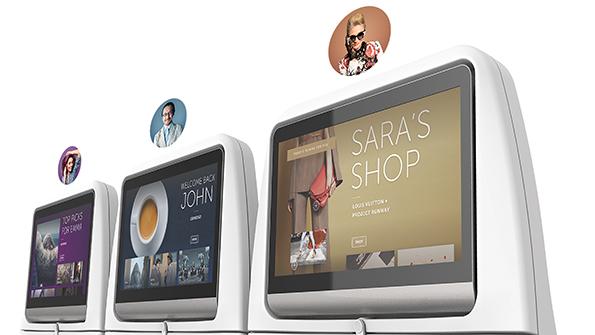
Inflight entertainment (IFE) and connectivity providers are focused on addressing the evolving needs of passengers who increasingly expect their onboard service to mirror that on the ground.
Unlimited global internet service, more tailored and real-time experiences, and the use of personal devices are all the norm at home and in the office. Passengers now expect to experience the same when they fly.
Free internet?
One of the largest questions on connectivity remains who pays for it. The old view that onboard internet service is something passengers would pay for is changing, however. A Thales spokesperson told ATW that airlines have begun to offer free internet service over the last two to three years, usually with data volume or time restrictions, but the concept of free unlimited global internet service is quickly gaining mainstream traction.
“Some airlines are testing with free Wi-Fi trial service following positive passenger feedback. This will be a key focus for airlines in the next couple of years, and will require service providers that can provide reliable, high-capacity solutions to meet increasing consumer demand,” Thales said.
Viasat VP & general manager-commercial aviation Don Buchman said airlines are “captivated” by the potential of delivering free [inflight connectivity] IFC to all passengers, but how each airline approaches it, and on what timetable, is up for debate.
“Each airline’s brand identity and promise are unique and explains why there cannot be a ‘one size fits all’ approach to free IFC. Over the next year, we expect to see a number of creative deals that span free, freemium and other sponsored content initiatives, like [the video distribution and technology partnership] we just announced with fuboTV or prior with Apple Music on American Airlines,” he said. “The critical thread tying it all together: a reliable, capacity-rich IFC network that can scale—like what Viasat offers—where capacity is the crown jewel of the system.”
Sensing & personalization
As aircraft cabins and flight decks become increasingly digitized, with sensors and internet of things devices designed for comfort, operations and maintenance, the use of the IFC system for real-time sensing and reporting will increase the opportunities for how they are used onboard.
“Airlines can utilize the IFC system to enhance personalization and generate ancillary revenue through advertising, shopping recommendations and other avenues,” Thales said. “IFC also enables operational improvements; studies have shown that providing pilots with access to real-time graphical weather data through means such as the onboard IFC system can lead to a 5% reduction in flight length and fuel burn.”
Thales said its InFlyt 360 digital platform and connectivity solutions are an integral part of this ecosystem, which generate value for airlines and passengers through services such as targeted advertising and personalized recommendations.
As more passengers download their preferred content, the bring your own device (BYOD) trend will continue to grow, Recaro Aircraft Seating CEO Mark Hiller said.
“To better service airlines embracing the BYOD trend, we have developed a patented tablet PC holder that allows ergonomic positioning for an optimum viewing angle of all standard tablets,” he said.
Seamless experience
Inmarsat Aviation VP Dominic Walters said the industry will also see developments in the connected cabin that enable a more tailored and seamless inflight experience, and to stay relevant in a competitive industry landscape, airlines must adapt to the behaviors and expectations of today’s and tomorrow’s passengers.
“It’s clear that an appetite for digital experiences, coupled with the vastly changing passenger demographic, continues to drive demand for onboard Wi-Fi,” Walters said.
For years, airlines have been frustrated with the lack of flexibility in IFE systems. Burrana VP-marketing David Pook said the company plans to offer a scalable IFE platform that addresses these challenges, including the ability to make changes to graphical user interfaces and apps without the need for testing, and the ability to mix and match hardware between seatback, wireless and overhead entertainment systems as well as in-seat power.
SITA said its vision for the future of IFC is a superior and future-proofed service for passengers that delivers a unified, seamless and fast experience that costs less.
“We believe that adding 4G and then 5G on top of existing Wi-Fi connections will offer airlines and their passengers the best of both worlds, while providing increased bandwidth. We will be showcasing how we can make this possible for airlines through our unified cabin connectivity solutions and enhanced mobile services.”





